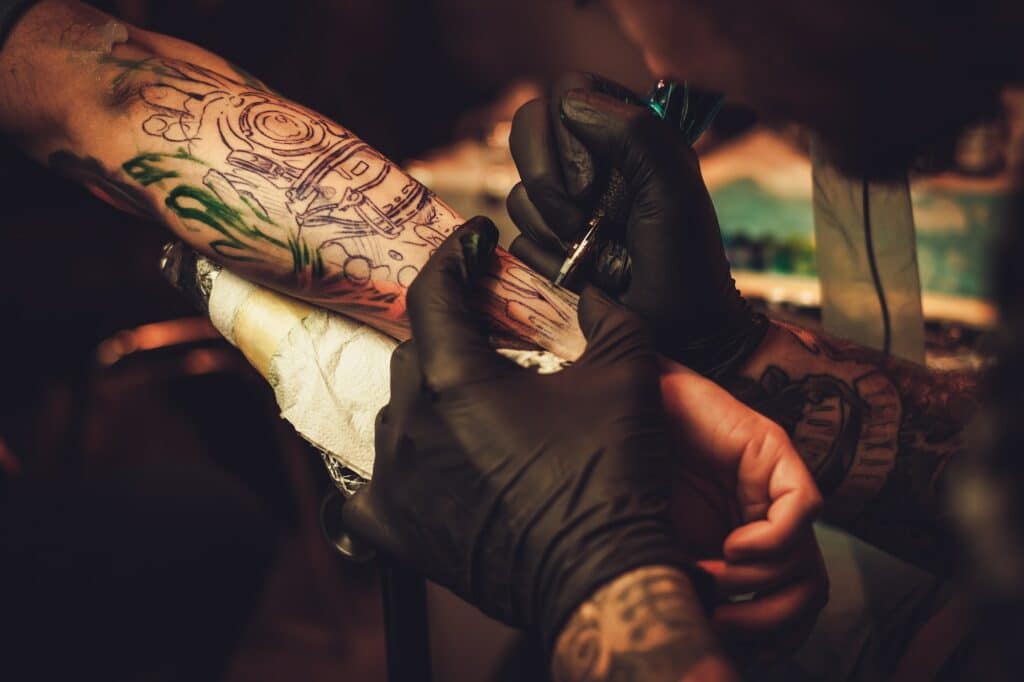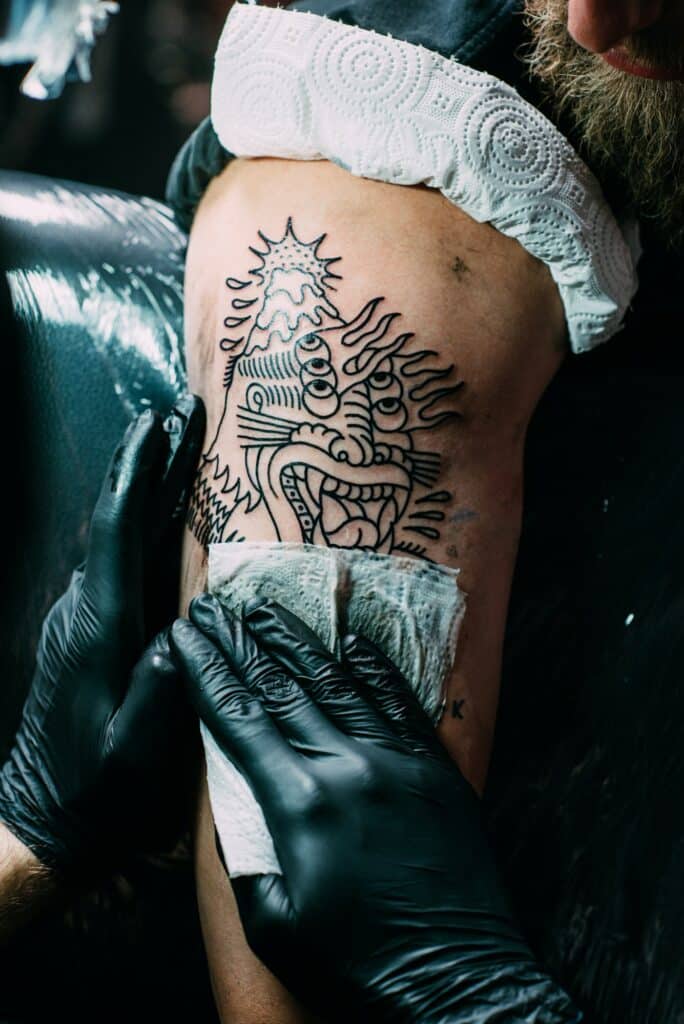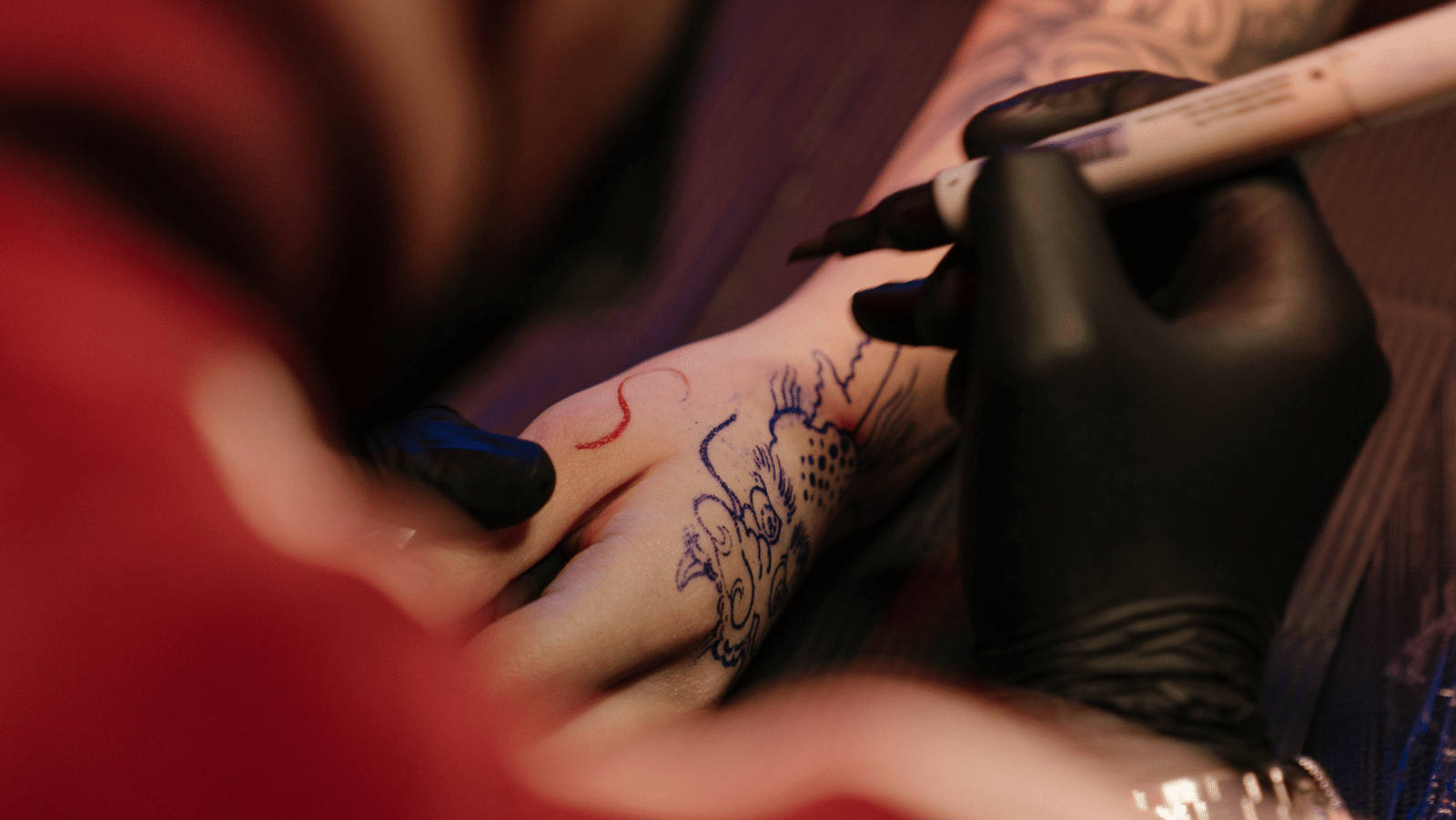Have you ever wondered what getting a tattoo feels like?

Whether it’s your first time or you’re a seasoned veteran of the needle, pain is likely one of the first things that come to mind. From numbing creams to laser treatments, there are many ways to approach the experience of getting inked.
In this article, we will help you understand the sensations associated with tattoos to prepare you for the process and give you an idea of what to expect.
Things You Need To Know Before Getting A Tattoo
Getting a tattoo is an exciting and personal decision that requires careful consideration. Before getting inked, there are several things you should know to ensure the best possible experience.
Firstly, it’s important to research and choose the right tattoo artist. Look for someone with a good reputation with experience in the design type you want. Don’t be afraid to ask questions or see examples of their previous work.
Additionally, make sure they follow proper hygiene practices and use sterile equipment.
Then, most important, consider your pain tolerance levels when choosing your design and placement area. Some body areas are more sensitive than others and may cause more discomfort during the process. It’s also crucial to take care of your skin before getting a tattoo by keeping it hydrated and avoiding sun exposure as much as possible.
The Feeling Of Getting A Tattoo
Getting a tattoo is an exciting and sometimes nerve-wracking experience.
One common question that people ask when considering getting a tattoo is, “what does it feel like?”
The answer may vary depending on personal pain tolerance levels and the location of the tattoo.
In general, getting a tattoo can be uncomfortable or painful. This is because, during the process, a needle punctures the skin repeatedly to deposit ink into the dermis layer of the skin. The sensation has been described as feeling like hot scratches or bee stings.
However, pain tolerance levels vary greatly among individuals. Some people report mild discomfort during their tattoos, while others find it incredibly painful. Additionally, certain body areas are more sensitive than others, such as bony areas or places with thin skin. Ultimately, how much a tattoo hurts will depend on each person’s unique experience and pain threshold.
Least Painful Body Parts To Get A Tattoo
Generally speaking, body parts with more flesh or fat are less painful than bony areas.
Many people believe that the back is one of the least painful places to get a tattoo due to its large surface area and high concentration of muscles that can help absorb some of the pain. The fatty tissue in this area also provides additional cushioning against the needle’s impact.
Your upper arm is one of the least painful places to get a tattoo. This area has a thick layer of muscle and fat which helps cushion the needle’s impact on your skin. Additionally, upper arms offer enough space for larger designs like sleeves or half-sleeves without getting too close to sensitive areas like elbows or armpits that can cause more discomfort.
Another relatively less painful area for tattoos is the outer thigh. Similar to the upper arm, this area has thicker skin due to its distance from bones and joints.
Other body parts that might be less painful include your chest and buttocks.
Most Painful Body Parts To Get A Tattoo
According to research conducted by experts, the most painful places for tattoos include areas with thin skin, bone projections or nerve endings.
Generally speaking, the bony areas of the body with thin skin are ribs, elbows, knees, hands and feet, so they must be the parts you should consider with caution. These areas have fewer nerves and muscles than other parts of the body, which means less cushioning between your skin and bones.
For instance, getting a tattoo on your ribcage can be excruciating due to the proximity of bones, and tattoos on your feet and hands can be incredibly uncomfortable due to nerve endings present in these areas.
For women, tattooing around the breast or nipple area could be particularly excruciating due to its sensitivity. Another sensitive area where getting inked can be extremely painful is your face. Although facial tattoos are rare, they are known for being very intense in pain.
Other Factors That Impact Pain Level
When it comes to getting a tattoo, pain is often the first thing that comes to mind. While the level of pain experienced during a tattoo session can vary depending on several factors, some lesser-known factors can also impact how much discomfort you feel.
One such factor is your mental state. Anxiety and stress can increase your perception of pain, so try relaxing as much as possible before and during your tattoo session. This might mean listening to calming music or taking deep breaths to help calm your nerves.
Another factor that can impact your pain levels during a tattoo is your overall health. If you’re feeling run down or unwell, this can make you more sensitive to pain. Similarly, if you’ve been drinking alcohol or taking drugs before your appointment, this can also affect how much discomfort you feel.
Additionally, the size and complexity of your tattoo can also affect how painful it will be. Larger tattoos may require longer sessions, which means more time spent under the needle. Intricate designs with lots of detail may also cause more discomfort because they require multiple passes over the same area.
Dealing With Tattoo Pain

Getting a tattoo can be an exciting but painful experience. Tattoo pain is common and varies from person to person depending on factors such as those mentioned above. While some people may describe it as mild discomfort, others may find it extremely painful.
Fortunately, there are several ways to manage tattoo pain during the process. One way is by taking over-the-counter pain relievers such as ibuprofen or acetaminophen before getting inked. These medicines can help reduce inflammation and provide temporary relief from pain.
Another option is to use topical numbing creams that contain lidocaine or benzocaine. These creams numb the skin’s surface and can help alleviate some discomfort associated with getting a tattoo. However, it’s important to note that these creams should only be used under medical supervision since they can have potential misused side effects.
Conclusion
In conclusion, getting a tattoo is a deeply personal experience. It can feel like a combination of pain and pleasure and an expression of your identity.
Although there is no definitive answer to what a tattoo feels like, it is clear that, for many, tattoos are symbolic and meaningful. They can represent strength, courage, or simply aesthetic beauty. Ultimately, the feeling of getting a tattoo cannot be fully understood until you have gone through it yourself.
FAQs
How long does it take for a tattoo to heal?
The healing process of a tattoo is different for everyone, but it typically takes four to six weeks for the skin to heal fully.
Are there any particular health risks associated with a tattoo?
Tattoos can be made from both natural and synthetic materials. However, some tattoo inks contain metals that can cause allergies or skin reactions. This can lead to skin cancer or scarring if not handled properly.
How long will it take until the tattoo fades away?
The time it takes for a tattoo to fade depends on the colour and the individual’s skin tone. The most common colours used in tattoos are black, brown, and navy blue. Black tattoos will fade faster than other colours because they are more light-resistant.
It is difficult to estimate how long it will take for a tattoo to fade because so many variables can affect the fading rate. Factors such as skin type and how much sun exposure you get can also influence how fast your tattoo fades away.




